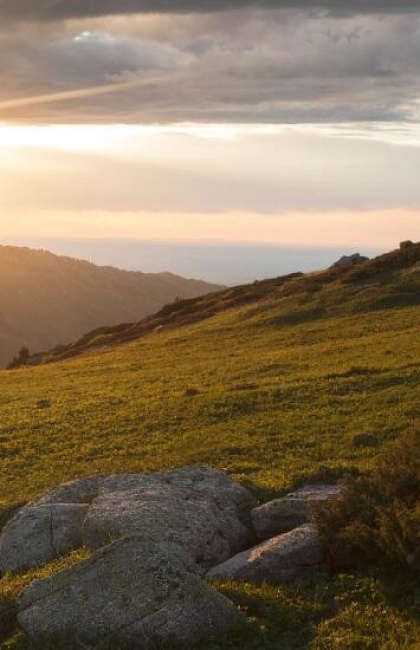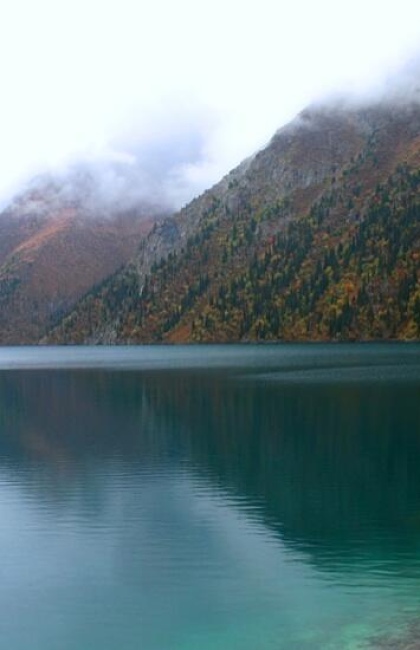Flora and fauna of the Dzungarian Alatau Mountains
The fauna and flora of the Dzungarian Alatau are shaped by its unique geographic conditions. The region boasts a diverse range of ecosystems, resulting in a rich array of plant and animal species.
A Glimpse into the Botanical World
In terms of vegetation, the coniferous forests in the Dzungarian Alatau are primarily characterized by Tien Shan spruces, although they are not as abundant as in the nearby Ile Alatau Mountains. These spruces intermingle with Siberian firs, creating a mix of evergreen beauty. The deciduous forests of the region feature prominent species such as birch, aspen, and the Sievers apple tree, which is considered the progenitor of all apple trees on Earth. Another noteworthy tree found in the local mountains is the Nedzwiecki's apple tree, which is utilized in breeding programs.
The meadows of the Dzungarian Alatau showcase a vibrant assortment of plant life. Here, you can find the golden root, valerian, maral root, Alatau saffron, and various other plant species. Among them, the snow lotus (Saussurea involucrata) stands out as a particularly rare and captivating flower. This endangered species is considered a relic and is predominantly found in the highlands. While local folklore once associated the snow lotus with misfortune or death for travelers, this belief has no basis in reality. In fact, the plant has been used in Tibetan medicine for centuries.
The Dzungarian Alatau is home to several endemic plant species that are found exclusively in the region. Notable examples include Pedicularis songarica, Festuca goloskokovii, Astragalus abbreviatus, Delphinium dasyanthum, Taraxacum alatavicum (Alatau dandelion), and Rosa schrenkiana (Schrenk's rosehip).
The meadows of the Dzungarian Alatau support a variety of medicinal and fodder plants, including alfalfa, alpine meadow-grass, tufted vetch, Tien Shan cherry, savin juniper, inula, and many others. These plants serve important ecological and economic roles, providing sustenance for various animal species and offering valuable resources for traditional medicine and livestock farming.

Vibrant Wildlife
Moving on to the fauna, the Dzungarian Alatau is frequented by an impressive array of wildlife. Wapitis, argali (wild sheep), and mountain goats navigate the slopes of these mountains. The region is also inhabited by diverse species such as the lesser white-toothed shrew, the Tien Shan red-backed vole, the mountain hare, the long-tailed ground squirrel, the spotted nutcracker, the brown bear, and the golden eagle.
Within the local reservoirs, you can find the ranodon, also known as the Central Asian salamander. This rare species is a narrow endemic of the Jetysu region and is exclusively found in the mountains of the Dzungarian Alatau. Unfortunately, the habitat of the ranodon is rapidly diminishing due to human impact on the environment. It thrives in crystal-clear water sources, which are increasingly being polluted.
The dhole, commonly known as the red wolf, faces a critical threat of extinction. Resembling a blend of a fox and a traditional wolf, this remarkable species was last sighted in the Dzungarian Alatau mountains during the mid-20th century. A noteworthy characteristic of red wolves is their ability to produce a diverse range of vocalizations, including sounds that can be likened to singing.
Another captivating inhabitant of the Dzungarian Alatau is the ibisbill, a bird species endemic to Central Asia. Within Kazakhstan, it exclusively breeds in the Dzungarian Alatau, specifically on the northern and central slopes. Regrettably, the ibisbill is classified as an endangered species. To safeguard these unique birds, certain reserves and natural parks in the country have undertaken protective measures.


_420x650_4ab.jpg)
_420x650_4ab.jpg)
_420x650_4ab.jpg)

_420x650_4ab.jpg)